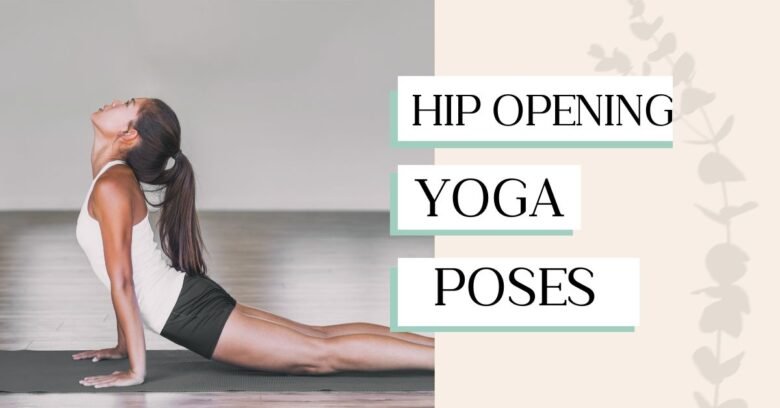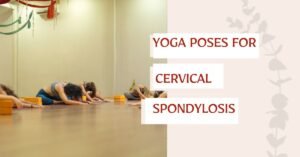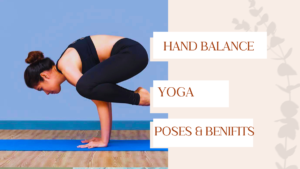🧘♂️ Aatm Yogashala presents an exploration of hip opening yoga poses 🧘♀️, a transformative aspect of the ancient practice from India 🇮🇳 known for enhancing physical 🏃♂️, mental 🧠, and spiritual ✨ well-being. Discover the rich history 📚 and science 🔬 behind the effectiveness of hip openers, and how incorporating these poses into your daily routine 📅 can unlock your full potential 🔓.
What are Hip Opening Yoga Poses?
Hip opening yoga poses are designed to increase flexibility and strength in the muscles around the hip joint. These poses, including classics like Pigeon Pose (Eka Pada Rajakapotasana), Frog Pose (Mandukasana), and Cow Face Pose (Gomukhasana), target the hip flexors, extensors, abductors, and adductors. By gently stretching and strengthening these areas, practitioners can improve their range of motion, enhance their balance, and even alleviate pain.
Benefits of Hip Opening Yoga Poses
The benefits of incorporating hip opening yoga poses into your routine are manifold. Physically, they can help to reduce stiffness in the hips, which is especially beneficial for those who spend long hours sitting. This reduction in tightness can lead to improved posture and mobility, lessening the risk of injury and back pain. Mentally and emotionally, hip openers are believed to release stored emotions and stress, as it’s said that we hold a lot of our emotional baggage in our hips. This release can lead to a greater sense of peace and emotional well-being, contributing to an overall healthier lifestyle.
Top 10 Hip Opening Yoga Poses
Now that we understand the importance of hip openers let’s explore some of the most effective poses:
Pigeon Pose (Eka Pada Rajakapotasana)
Benefits: Stretches the thighs, groin, back, and psoas. Relieves tension in the lower back and hips.
Steps: Begin in a downward-facing dog position. Bring your right knee forward, placing it behind your right wrist. Extend your left leg back, keeping your hips square to the ground. Hold for 5-10 breaths, then repeat on the other side.
Lizard Pose (Utthan Pristhasana)
Benefits: Opens up the hip flexors and stretches the hamstrings and quadriceps.
Steps: From a downward-facing dog, step your right foot to the outside of your right hand. Lower your left knee to the ground, keeping your right knee bent. Hold for 5-10 breaths, then repeat on the other side.
Cow Face Pose (Gomukhasana)
Benefits: Enhances mobility in the hips, thighs, shoulders, and arms; promotes deeper breathing.
Steps: Sit with your legs extended in front of you. Bend your right knee, bringing your right foot to the outside of your left hip. Stack your left knee on top of your right, bringing your left foot to the outside of your right hip. Hold for 5-10 breaths, then repeat on the other side.
Happy Baby Pose (Ananda Balasana)
Benefits: Relieves stress and fatigue, stretches the inner groins, and calms the mind.
Steps: Lie on your back, bringing your knees towards your chest. Grab the outside edges of your feet, bringing your ankles directly over your knees. Gently pull down, opening your hips and stretching your inner thighs. Hold for 5-10 breaths.
Frog Pose (Mandukasana)
Benefits: Opens up the inner thighs, groins, and hips. Improves flexibility in the lower body.
Steps: Begin on your hands and knees. Slowly widen your knees until you feel a comfortable stretch in your inner thighs. Keep your feet in line with your knees, toes pointed outward. Lower onto your forearms, holding for 5-10 breaths.
Fire Log Pose (Agnistambhasana)
Benefits: Stimulates the abdominal organs, stretches the hips, groins, and shoulders.
Steps: Sit with your legs extended in front of you. Bend your right knee, placing your right ankle on your left thigh. Bend your left knee, stacking your left ankle on your right knee. Hold for 5-10 breaths, then repeat on the other side.
Butterfly Pose (Baddha Konasana)
Benefits: Improves flexibility in the inner thighs, groins, and knees. Stimulates abdominal organs and soothes menstrual discomfort.
Steps: Sit with your legs extended in front of you. Bring the soles of your feet together, allowing your knees to fall out to the sides. Hold your feet or ankles, gently pressing your thighs down towards the ground. Hold for 5-10 breaths.
Yogi Squat (Malasana)
Benefits: Tones the abdomen, improves the function of the colon, and enhances mobility in the ankles and hips.
Steps: Stand with your feet slightly wider than hip-distance apart. Bend your knees, lowering your hips towards the ground. Bring your palms together at your chest, using your elbows to gently press your knees outward. Hold for 5-10 breaths.
Half Pigeon Pose (Ardha Kapotasana)
Benefits: Targets the hip flexors, stretches the thighs and glutes, and alleviates lower back pain.
Steps: Begin in a downward-facing dog position. Bring your right knee forward, placing your right ankle near your left wrist. Extend your left leg back, keeping your hips square to the ground. Fold forward over your right leg, holding for 5-10 breaths. Repeat on the other side.
Seated Wide-Legged Forward Fold (Upavistha Konasana)
Benefits: Stimulates the abdominal organs, stretches the spine, and strengthens the muscles of the lower back.
Steps: Sit with your legs extended in front of you. Open your legs as wide as comfortable, keeping your feet flexed. Fold forward from your hips, reaching for your feet or the ground. Hold for 5-10 breaths.
Remember to listen to your body and only go as far as feels comfortable. Use props, such as blocks or blankets, to support your practice and make the poses more accessible.
Conclusion
Incorporating hip opening yoga poses into your routine can have profound effects on both your physical and emotional well-being. These poses not only enhance flexibility and strength in the hip region but also promote a sense of release and balance throughout the entire body.
By regularly practicing the top 10 hip opening poses outlined above, individuals can experience improved posture, reduced back pain, and an overall increase in mobility. Importantly, always approach your practice with mindfulness and respect for your body’s limits to ensure a safe and beneficial yoga experience.
FAQs
1. What are the benefits of hip opening yoga poses?
Hip opening yoga poses offer a myriad of benefits including improved flexibility, enhanced range of motion in the hips, relief from back pain, and stress reduction. They can also aid in the alleviation of symptoms related to chronic conditions such as arthritis.
2. How often should I practice hip opening poses?
For optimal results, incorporating hip opening poses into your yoga routine 2-3 times a week is recommended. Consistency is key to seeing improvements in flexibility and reduction in tightness and pain.
3. Can hip opening yoga poses help with back pain?
Yes, many people find relief from lower back pain through regular practice of hip opening poses. These poses help to alleviate tension and imbalances in the hips, which are often contributing factors to back discomfort.
4. Are hip opening yoga poses suitable for beginners?
Yes, hip opening poses can be modified to suit all levels, including beginners. It’s important to start slowly and use props if needed to ensure proper alignment and avoid injury. Listening to your body and practicing under the guidance of a certified yoga instructor can also provide a safer experience.
5. Can I practice hip opening yoga poses if I have a hip injury?
If you have a hip injury or any other medical condition, it’s crucial to consult with a healthcare professional before starting or modifying your yoga practice. They can provide personalized advice and modifications to suit your specific health needs.Advanced Hip Opening Yoga PosesFor those who have developed a strong foundation in their yoga practice and wish to deepen their hip opening exercises, exploring advanced poses can provide both a challenge and an opportunity for greater flexibility and strength. It’s important to approach these advanced poses with respect for your body’s limits and to warm up adequately before attempting them.




